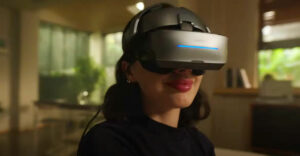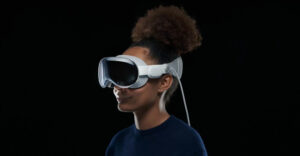
I was at the Qualcomm Internet of Things event in San Francisco last week during what was a major IoT event in the city. What is kind of amazing is the larger event was just a small part of the applications show that used to go on at the same time. This year it is twice the size of that older show. Companies are flocking to this IoT concept like ducks to water. This means in a few short years we are going to be up to our ears in connected things.
Qualcomm plans to be at the center of this with modems, hubs, and two broad initiatives: the AllSeen Alliance and the AllPlay effort to drive all of this into solutions that will work together and not drive us nuts with interoperability problems. They promise an interesting future world.
I’ll share some ideas about that this week and close with a related product of the week: the amazing Lily Drone that my wife already has bought me for my birthday in 2016. Yes — it’s that good.
A Day of Connected Devices
A few years back, Corning made a series of videos called “A Day made of Glass.” They are an impressive way to showcase a desirable future, when we’d be up to our armpits in cool glass panels from Windows that could self-dim or turn into TVs, plus active displays we could place all around our homes and use coincidentally to interact with all of our connected devices and services. As the name implies, presentation starts with a family waking up in the morning, and it follows them through the day as they interact with all those forward- looking devices.
If Qualcomm were to do the same thing, the script might in some ways be very similar in terms of what people interface with, but the focus would be more on the automatic interoperation of appliances, music and security systems, and automobiles.
The Qualcomm Morning
In Qualcomm’s case, the day would start before the family awakened. The refrigerator would do an inventory and discover there wasn’t enough milk for the coffee and cereal the family typically consumed for breakfast, so it would notify Amazon Fresh that the house would need milk first thing in the morning.
The heating system in the home, having been on low-temperature mode all night, would begin to heat up the house, and the heated floors and toilet seats would begin to preheat so they’d be warm when the family wakes up. (By the way, if you’ve never walked on a heated floor barefoot in the morning or used a heated toilet seat — don’t. You’ll want them. I now have heated floors and heated toilet seats everyplace — and they aren’t cheap.)
The coffee machine would preheat as well.
The music in each room would begin and slowly increase in volume, while the smart windows would let in more and more light. The family would wake up looking rested, and without the panicked look normally associated with a screaming alarm.
The temperature would be comfortable — and while you wouldn’t see this, there would be none of the typical exclamations when warm butts hit cold toilet seats. The seats also would go up and down automatically, depending on which family member was using the toilet — a feature that could save a number of marriages.
Behind the scenes, you’d see city systems adjusting for water and electricity loads as smart sensors optimized resources for both anticipated and actual demand. On the SmartTVs around the house, the same morning news program would be displayed, showing weather and traffic in the sidebar. Countdown timers at the bottom would show when each family member would need to leave.
While the kids were getting ready, the parents would go on a run — logging their distance, heart rate, and calories burned through their smartwatch. The data would mirrored on one of the home’s smart displays as well as on their smartphones. It would be shown against daily targets. When they return home and stand on the smart scale, the system also would show their progress against friends.
The parents would change, and at about the time alerts started popping up that it was time to leave, each would wander out to their various transportation modes. The mother would take the car and be directed around traffic areas through smart city reports. The car would drive itself and have WiFi inside, allowing the mother to prepare for her morning staff meeting on the drive.
The father would move into his home office, where his computer already would be fired up with a list of what he needed to accomplish that day.
The younger son would watch an app on his phone, which would show his bus approaching, while the daughter would view a similar app, showing that her friend who’d be giving her a ride to school was nearly there. Both would arrive at their respective curb locations as their ride approached.
During a Qualcomm Day
During the day, the parents would receive alerts about where their children were and what their health was through their kids’ smartwatches. (By the way, these kid-focused tracking and monitoring smartwatches apparently are common in Asia today, and are free with a US$10 per month data charge.)
The kids would know that if they got into trouble, they could just hit a button and get help. One of the alerts the father would receive would be about his mother, who was connected to Qualcomm’s 2Net health platform. He would see that her blood sugar indicated she needed immediate help. The EMTs would be dispatched automatically.
He’d grab his BMW Mini augmented reality glasses, and they’d guide him to the hospital and right to an open parking space. Wearing them out of the car, they’d guide him right to admitting. As a result, he’d be able to meet her as she was wheeled into the hospital and make sure all of the paperwork was electronically signed off.
His phone would automatically alert the mother that he had left the home and gone to the hospital. She would arm the alarm system and shift her desktop display to show the home’s security cameras to make sure the house remained safe.
A Qualcomm Night
At the end of the day, the family would converge in the living room and talk about their day. The parents already would have received alerts on homework assignments and would congratulate both kids on their accomplishments during the day based on the alerts they got from the school. They would scold the son for drifting from his diet by drinking too much soda and not enough milk. The father would note his gym scores were down and suggest he run with the parents over the weekend and work on some of his agility issues.
The doorbell would ring and the Meals on Wheels folks would drop off dinner. The wife would reminisce happily that it was great they no longer lived in a world where the wife had to work and prepare dinner. The husband would smile, happy he didn’t have to do that either, and use his smartwatch to select items for dinner the next night.
The kids would go to their rooms and put their smartphones into virtual reality headsets. The girl would chat with her friends as they collectively worked on a class project to create a flying car. The boy and his friends would observe, comment and interact with an emulation of a Civil War battle, while their teacher stepped in virtually to points out things they missed.
Later, they would use the same glasses to play World of Warcraft, and team up to take down a particularly difficult monster. Before they’d made much headway, they’d start getting alerts it was time for bed. After the third alert, two new characters would enter the game and kill the monster. It would turn out they were the mom and dad, who would then suggest the kids get ready for bed.
After everyone was in bed, the burglar alarm system would arm, the lights would dim or go out, and during the night’s low-power cost periods, the dishwasher would clean the dishes and the robotic cleaners would vacuum and sweep the floors.
Wrapping Up: The Connected Future
This is a far from comprehensive picture of the world Qualcomm was imagining last week, which included some impressive phone-to-car integration examples.
In the end, the world Qualcomm is imagining is a world where being connected means we are safer, we are better able to interact with and take care of our families, we can minimize our costs, and we are far less stressed than we are today. It is a compelling vision. Qualcomm’s new tag line is “Why Wait?” Why wait indeed.
I have two drones, and it is amazing how much they have advanced over the last two years. Still, the problem with both is that if you want to film yourself doing anything you really can’t, because you have to concentrate on flying the drones — and that isn’t as easy as folks make it look.
What makes the Lily drone (they actually call it the Lily “camera”) amazing is it is designed to film you. It is actually a cross between a drone and an amazing selfie flying video camera. You throw it into the air and it follows you for 20 minutes or leads you for 20 minutes, filming you all the time. I’ve never seen anything easier.

When it is done, it lands in your hand. You wear a wrist-mounted device that you can use to send the drone commands, and so it knows who to follow. This amazing drone is waterproof, so if it drops in the water no big deal. It auto collapses the propellers (which are impressively robust) so you can put it in your backpack and don’t need a specialized case.
When it is generally available, it will sell for $1,000 — but if you order it now and help fund its launch, you can get it for half off at a bit over $500. It is one heck of a deal if you can wait until 2016 when it actually ships.
I sent my wife the video and she took one look at this thing and asked me if I wanted it. I said yes, and she said “Happy Birthday.” I thought 2016 — but I think it may be my birthday present for this year and next. Suddenly, this seems like a much better deal for her, but hell I don’t really care, I want that drone. As a result, the Lily camera drone is my product of the week. It looks simply amazing. It strikes me that a drone like this might be a perfect addition to the Qualcomm world of the future.






















































